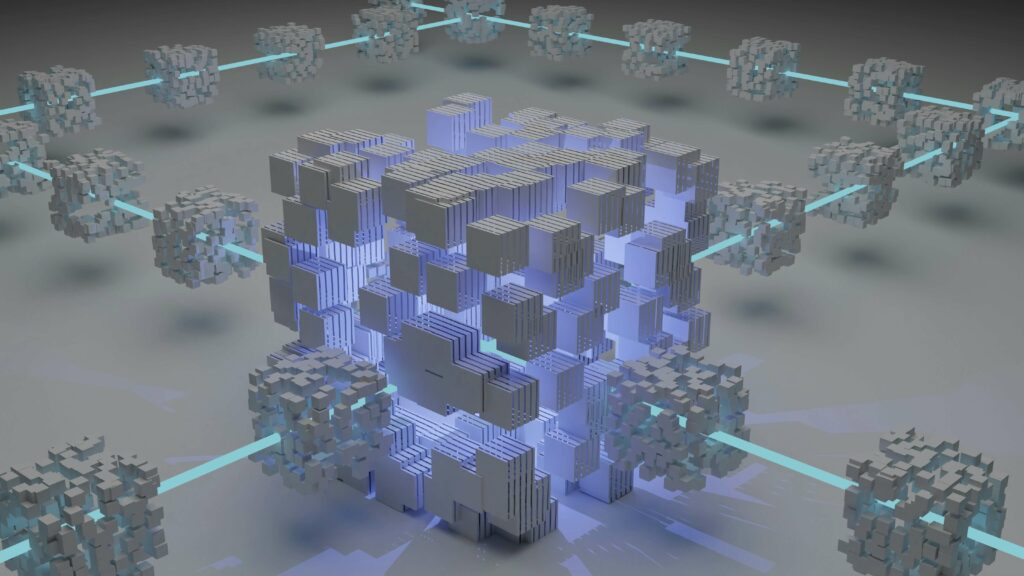
22.04.2024
Blockchain, DLT Technology, Mining and Consensus Protocols explained with 50 questions and answers (1).
 Por
Claramunt Julián, Leticia
Por
Claramunt Julián, Leticia 1.- What is a blockchain and why is everyone talking about Blockchain or “Blockchain Networks”?
Imagine a giant, transparent ledger, where every page records a transaction and everyone can see it. That is the essence of blockchain, a technology that transforms the way we interact in the digital world.
How does it work?
- Each transaction becomes a “block” of
- The blocks are chained together chronologically, creating an unbreakable
- The chain is replicated on multiple computers, ensuring security and
Why is it important?
- Trust without intermediaries: Eliminates the need for intermediaries, notaries, registrars, or “third parties” such as banks or governments, reducing costs and
- Security and transparency: Each transaction is immutable and visible to all, preventing fraud and manipulation.
- Automation and efficiency: It allows to automate complex processes and to optimise the use of resources.

Si te ha interesado este artículo no dudes en leer:
Legal Aspects of Blockchain, Tokens and DLT Technology
2.- What is the difference between DLT/TRD and Blockchain technology? Two sides of the same technological coin
DLT (Distributed Logging Technology or DRT) and Blockchain are terms that are often used interchangeably, but in reality they have subtle differences.
- DLT: This is the general concept that encompasses this type of digital ledger. It is like the “genre” of the novel.
- Blockchain: It is a specific technology within DLT, as if it were a “literary genre” within the general genre of the novel. It is characterised by the blockchain structure.
In other words:
- All Blockchain is DLT, but not all DLT is
- DLT is a broader concept that includes different technologies, such as Blockchain, Hashgraph, IOTA, etc.
- Blockchain is the best known and most widely used DLT technology in use
- Structure: Blockchain has a blockchain structure, while other DLTs may have different structures (e.g. directed acyclic networks).
Differences between Blockchains and Directed Acyclic Networks (DAG)
Blockchain and directed acyclic networks (DAGs) are two distributed logging technologies (DLTs) that share some similarities, but also have important differences:
Structure:
- Blockchain: Data is organised in a linear structure, where each block is linked to the previous one, creating an unbreakable chain.
- DAG: Data are organised in an acyclic graph structure, where each node is connected to one or more subsequent nodes, without forming a linear chain.
Examples:
- Blockchain: Bitcoin, Ethereum, Hyperledger
- DAG: IOTA, Tangle, Hedera Hashgraph.
In a nutshell:
- Blockchain is a mature DLT technology with a large community and established applications.
- DAGs are a newer DLT technology with the potential to offer greater scalability and flexibility.
- Consensus: Blockchain mainly uses Proof of Work (PoW) consensus, which we will see later what it is in more detail, while other DLTs may use different consensus mechanisms (e.g. Proof of Stake (PoS)).
- Applications: Blockchain is mainly associated with cryptocurrencies and decentralised finance, while DLT has a wider range of potential applications (e.g. supply chain, digital identity, etc.).
Conclusion:
- DLT is a general concept that encompasses distributed ledger technologies such as Blockchain.
- Blockchain is a specific DLT technology characterised by its blockchain structure.
- Both technologies share the goal of creating reliable, transparent and secure digital records.
If you liked this article, you may also find it interesting to read the following one:
Sustainability and Blockchain: A Legal Marriage with a Future
Contacto No te quedes con la duda, contacta con nosotros. Estaremos encantados de atenderte y ofrecerte soluciones.











